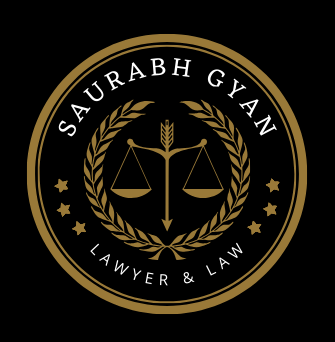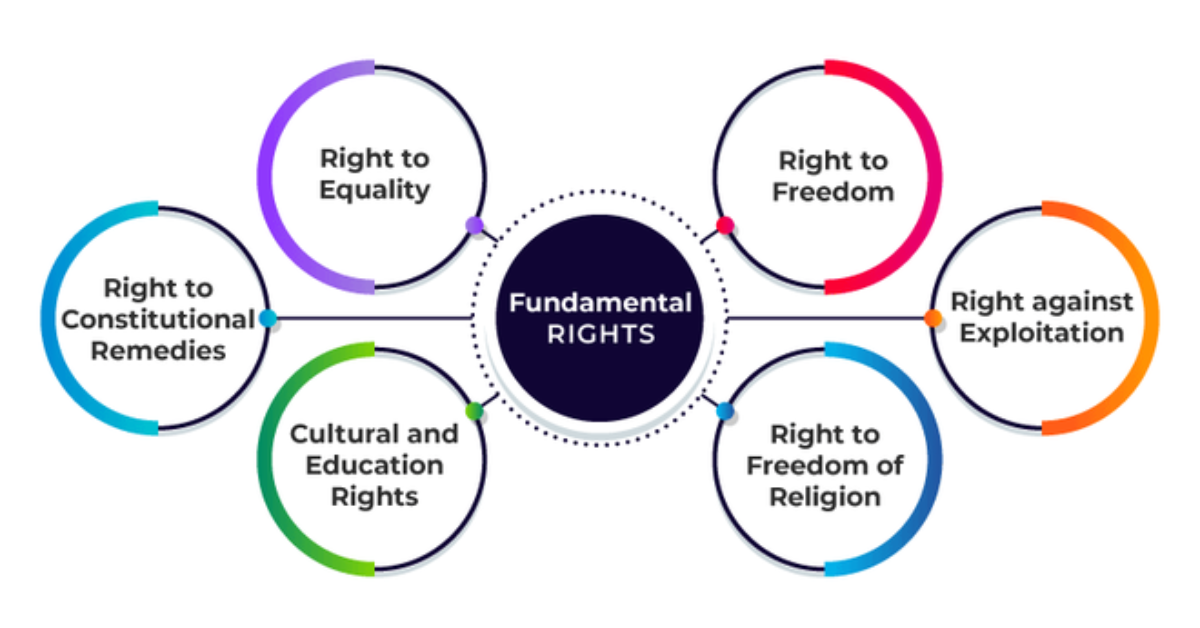Fundamental Rights are the bedrock of democracy in India, ensuring liberty, equality, and justice for all citizens. However, these rights are not absolute—they come with reasonable restrictions to maintain public order, security, and morality.
The challenge lies in balancing individual freedoms with societal interests. This blog explores:
- What are Fundamental Rights?
- What are Reasonable Restrictions?
- Key constitutional provisions and landmark judgments
- How courts interpret this balance?
1. Fundamental Rights Under the Indian Constitution
Fundamental Rights are enshrined in Part III (Articles 12–35) of the Indian Constitution. They provide individuals with protection against state actions and ensure a fair and just society.
| Fundamental Right | Article | Description |
|---|---|---|
| Right to Equality | 14–18 | Prohibits discrimination and guarantees equal opportunity. |
| Right to Freedom | 19–22 | Includes speech, expression, movement, and protection from arbitrary detention. |
| Right Against Exploitation | 23–24 | Prohibits human trafficking and child labor. |
| Right to Freedom of Religion | 25–28 | Ensures religious freedom and secularism. |
| Cultural and Educational Rights | 29–30 | Protects minority groups’ language, culture, and education. |
| Right to Constitutional Remedies | 32 | Right to approach the Supreme Court for enforcement of rights. |
While these rights are fundamental, the state can impose reasonable restrictions to ensure national security, social order, and morality.
2. Understanding Reasonable Restrictions
Article 19(2)–(6) of the Constitution provides grounds for imposing reasonable restrictions on fundamental rights:
- Security of the State – Preventing activities that threaten national security.
- Sovereignty and Integrity of India – Restrictions to maintain India’s unity (added via the First Amendment, 1951).
- Public Order – Preventing riots, violence, or communal disharmony.
- Decency and Morality – Preventing obscene or morally offensive content.
- Contempt of Court – Prohibiting criticism that undermines judicial authority.
- Defamation – Protecting individuals from false statements damaging their reputation.
- Incitement to an Offense – Prohibiting speech that encourages illegal activities.
These restrictions must be reasonable, meaning they:
✅ Serve a legitimate public interest.
✅ Are not arbitrary or excessive.
✅ Are proportionate to the situation.
3. Fundamental Rights vs. Reasonable Restrictions: Landmark Cases
1. Free Speech and Reasonable Restrictions
- Romesh Thapar v. State of Madras (1950):
- The Supreme Court ruled that press freedom is essential to democracy.
- The court struck down restrictions on circulation of newspapers.
- Shreya Singhal v. Union of India (2015):
- The Supreme Court invalidated Section 66A of the IT Act for being vague and unconstitutional in restricting free speech.
2. Right to Equality vs. Reservations
- Indra Sawhney v. Union of India (1992):
- Upheld reservations for backward classes, stating that affirmative action is a reasonable restriction on general equality.
3. Public Order vs. Right to Protest
- Shaheen Bagh Protest Case (2020):
- The Supreme Court ruled that while protests are a fundamental right, they cannot disrupt public order indefinitely.
4. Right to Privacy vs. State Surveillance
- K.S. Puttaswamy v. Union of India (2017):
- Right to Privacy is a fundamental right under Article 21.
- State surveillance must be justified under reasonable restrictions.
4. Judicial Interpretation: Striking a Balance
The Supreme Court follows a three-pronged test to determine if a restriction is reasonable:
- Legitimate Aim – The restriction must serve a valid purpose (e.g., security, public order).
- Proportionality – The restriction should be necessary and not excessive.
- Procedural Safeguards – There must be clear legal procedures to prevent abuse.
Courts have expanded and restricted fundamental rights based on evolving societal needs.
5. Case Study: Internet Shutdowns and Free Speech
Context
- The Indian government frequently shuts down the internet to control misinformation and prevent violence.
- The longest internet shutdown in India was in Jammu & Kashmir (2019–2020).
Legal Challenge: Anuradha Bhasin v. Union of India (2020)
- The Supreme Court ruled that:
✅ Internet access is a part of the Right to Freedom of Speech (Article 19).
✅ Blanket shutdowns are unconstitutional; restrictions must be proportional and time-bound.
This case showed that reasonable restrictions must be carefully implemented to prevent government overreach.
6. Challenges in Implementing Reasonable Restrictions
- Vague and Arbitrary Laws
- Many laws (e.g., sedition law, UAPA) have broad provisions that can be misused.
- Courts have limited the misuse of sedition laws (e.g., Kedar Nath Singh Case, 1962).
- Political Misuse
- Governments may suppress dissent under the pretext of public order.
- Example: Preventive detention laws have been criticized for being misused against activists.
- Evolving Technology and Privacy Concerns
- Mass surveillance, data privacy laws, and AI regulation need a balance between security and individual rights.
- Aadhaar Case (2018): The court ruled that Aadhaar is constitutional but cannot be made mandatory for private services.
7. Conclusion: Balancing Freedom and Responsibility
Fundamental Rights form the core of democracy, but they must be exercised responsibly. Reasonable restrictions are essential to prevent misuse of rights without curbing individual liberties excessively.
Way Forward:
✅ Stronger judicial safeguards to prevent arbitrary use of restrictions.
✅ Clearer definitions of terms like “public order” and “morality” to avoid misuse.
✅ Regular review of restrictive laws to ensure they serve legitimate purposes.
✅ Increased public awareness about rights and limitations.
Democracy thrives when individual freedoms and state interests are balanced with fairness and accountability. 🚀

